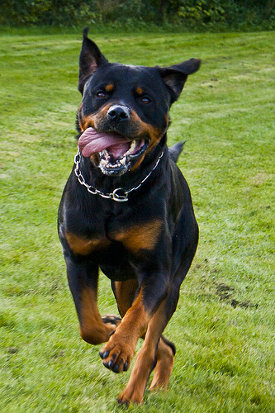|

A reliable recall command, or "come," is the best thing you can teach your dog. Knowing how to teach a dog to come empowers you to make this skill second nature to your dog. It will open up a world of possibilities for you and your dog to explore.
Some examples of when a good recall is critical:
- If you're at the dog park and a scuffle breaks out, you want your dog to come when called rather than check out a risky situation.
- If you and your dog are exploring off-leash in the woods and you spot a dead animal, you want your dog at your side before he checks it out and ingests dangerous parasites.
- If your dog runs outside and a car is coming, you need your dog safely beside you before his life is in danger.
And many, many other scenarios. So let's get to how this works.
How to teach a dog to come
First and foremost, you don’t want to teach your dog not to come. Sounds obvious, right? But dog owners do it every day without realizing it. Here’s how: you catch your dog doing something bad, so you yell to get his attention. “Fido, no! Come!” That’s what you say, but here’s what your dog hears you say: “I’m mad! You don’t want to come near me!” He learns to avoid you when he hears "come," rather than coming when called.
Instead, always be positive when you give your dog the command to come. Every time. Even if your dog is doing something bad, if you give him the command to come, praise him for responding appropriately, then handle whatever else you need to. One trainer I talked to recommends using a treat every single time your dog comes when called.
Here are the basic steps to come:
1. Choose an environment where your dog feels comfortable, such as your living room or patio, where there are few distractions.
2. Tell your dog to sit and stay in front of you, back up a few feet, say “come,” then when your dog comes to you, offer a treat and lots of praise. That shows your dog that coming when called is a good thing.
a. If your dog starts to come but then heads a different direction, say “come” again in a higher-pitched voice. Dogs love that. Your dog may respond to the tone at first, then connect the word with the command.
3. Practice for about 10 minutes at a time. Any more than that and your dog will lose focus.
4. As your dog’s recall gets more reliable, add in the 3 D’s: distance, duration, and distraction.
Distance
Slowly add to the distance your dog must cover to get to you. Work up to 5 feet, 10 feet, until your dog comes from across the room or yard. Another variation: Get a partner and stand at opposite ends of yard. Start with the dog sitting beside you. The partner calls the dog to come, praises him when he does, then gives him the command to sit. Then you call the dog back to you. That turns it into a game while teaching him what you expect.
Duration
Make your dog wait longer between each stay and come command. If he knows you have treats in your pocket, it will make him more anxious to come, which strengthens his response to the command.
Distractions
It’s one thing if your dog’s recall is reliable 100% of the time in the backyard, but that’s not when it really counts. It’s when there are cars driving by, aggressive dogs approaching, and things more exciting than you that you need to know your dog will come when called.
Here’s how to work on it. Get a retractable dog leash with plenty of length to it. Take your dog somewhere there are distractions such as people, cars, and other sights, sounds, and smells, such as in front of your home where it's familiar but exciting. Put your dog on the retractable leash, extend the leash to about 5 feet, and lock it at that length. Then use the steps above just like you did in the back yard. As your dog gets better, extend the leash length. The advantage of this technique is that you have the benefit of distractions plus distance to train your dog without the risk of him being off-leash and running. The added advantage is that your dog won't be rewarded if he runs. If your dog was off-leash and ran away, he would be rewarded for not listening (getting what he was chasing, etc.). Once you’re confident in your dog’s recall in that scenario, try new scenarios and distractions: at someone else’s house, at a park, near a bike path, etc.
It's not quick to teach a dog to come, but the rewards are worth every moment it takes. Follow these steps for how to teach a dog to come and you'll be confident that your dog will be at your side whenever you need him to be.
Ready to get started? Get a Flexi lead, the retractable leash that is ideal for use in this training scenario. It extends up to 16 feet long, giving you plenty of room to add distance to your training exercise. The built-in brake allows you to lock the leash's length at any length up to its full 16 feet, giving you flexibility at each stage in training. Click here to order your Flexi lead today.
If you liked this, you may also like:
How To Teach A Dog To Walk On A Leash
How To Teach A Dog To Stay
Dog Urine Grass Repair
Photo credit: Mikael Bergman
|